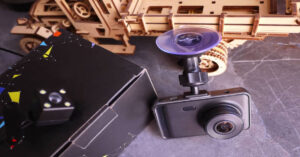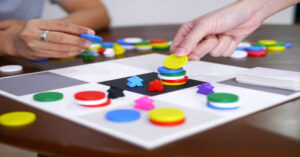Sudden cardiac arrest can happen to anyone, at any place, and at any time. When the heart stops beating normally, immediate action is crucial. One of the most important tools in these emergencies is the AED, or automated external defibrillator. This small, easy-to-use device can make the difference between life and death. Knowing how an AED works and why it is important can give you the confidence to act in a crisis.
CPRCertificationNow offers training that teaches how to use AEDs safely and effectively, along with CPR skills that help keep blood flowing until emergency responders arrive.
What is an AED?
An AED is a portable device designed to analyze the heart’s rhythm. If the heart is in an abnormal rhythm that prevents it from pumping blood, the device can deliver an electric shock to restore a normal rhythm. AEDs are intended for use by everyday people, not just medical professionals, which makes them incredibly valuable in public spaces, workplaces, and homes.
AEDs guide the user step by step. They provide clear voice instructions, making it easy to use even if you have never operated one before. This feature ensures that anyone nearby can help quickly during a cardiac emergency.
Why Immediate Use Matters
When a person suffers cardiac arrest, the heart stops pumping blood. Without oxygen-rich blood, the brain and vital organs start to fail within minutes. Every second counts. Quick use of an AED can greatly increase the chance of survival.
- Survival rates drop about 10% for every minute without intervention
- Using an AED within the first few minutes can double or triple the chance of recovery
- AEDs are most effective when combined with CPR
Being trained to act quickly ensures that you can respond effectively in real emergencies.
How AEDs Work
AEDs are designed to be simple yet highly effective. Once turned on, they check the heart’s rhythm. If a shock is needed, the device instructs the user to stand clear and deliver it. After the shock, it reassesses the heart and tells you if another shock is required.
During training, you learn:
- How to attach pads correctly on the chest
- When to deliver a shock
- How to continue CPR between shocks
- How to stay calm and follow the prompts
The combination of CPR and AED use gives the person the best possible chance of survival.
Who Can Use an AED?
AEDs are intended for use by anyone who is trained or even untrained in emergencies. Because the device provides instructions, it is safe for a bystander to use it. Many organizations, workplaces, schools, and public areas keep AEDs available for emergencies.
Learning to use an AED is recommended for:
- Parents and caregivers
- Teachers and school staff
- Office employees
- Coaches and sports leaders
- Fitness trainers
- Lifeguards and first responders
Training from CPRCertificationNow ensures that you know how to respond confidently when a cardiac emergency occurs.
AEDs and CPR: A Life-Saving Team
AEDs and CPR work best together. While the AED analyzes the heart, CPR keeps blood flowing to vital organs. Proper compressions maintain oxygen circulation, increasing the chances of a successful shock.
During training, you practice:
- Checking for responsiveness
- Performing high-quality chest compressions
- Using the AED promptly
- Following prompts and reassessing after shocks
This combined approach is the standard for saving lives during cardiac arrest.
Where AEDs Are Commonly Found
AEDs are becoming increasingly available in public spaces to improve survival rates. Common locations include:
- Airports and train stations
- Shopping centers
- Gyms and sports facilities
- Schools and universities
- Workplaces and offices
- Community centers
Knowing the location of the nearest AED and learning to use it is crucial. Quick access can make a life-or-death difference.
Benefits of Knowing AED Use
Understanding AED use provides confidence and preparedness. People trained in AED use are more likely to take action in emergencies instead of waiting for help. This proactive approach can save lives, reduce brain damage, and improve outcomes.
Other benefits include:
- Faster response during cardiac arrest
- Less panic when faced with emergencies
- Ability to assist family, friends, and coworkers
- Increased readiness in workplaces and public spaces
The combination of knowledge, training, and readiness is what makes AEDs so effective in saving lives.
Maintaining Confidence and Skills
Even after training, it is important to refresh your AED and CPR skills regularly. Skills can fade over time, and practicing ensures you are ready to act in real emergencies. Online and in-person courses provide opportunities to review techniques and stay up to date on the latest guidelines.
Regular practice helps you:
- Remember the correct pad placement
- Perform compressions at the right speed and depth
- Follow AED prompts confidently
- Stay calm during high-pressure situations
Keeping your skills fresh improves your chances of a successful rescue.
Conclusion
AEDs are simple, life-saving devices designed to help anyone respond in cardiac emergencies. They guide users through the process of restarting the heart while CPR keeps blood flowing to vital organs. Knowing how to use an AED and performing CPR can make the difference between life and death.
Training through https://cprcertificationnow.com provides the knowledge and confidence needed to respond quickly. By learning how to use an AED and practicing CPR, you can help save lives at home, at work, or in public. Emergencies are unpredictable, but your preparedness can change outcomes for the better.









